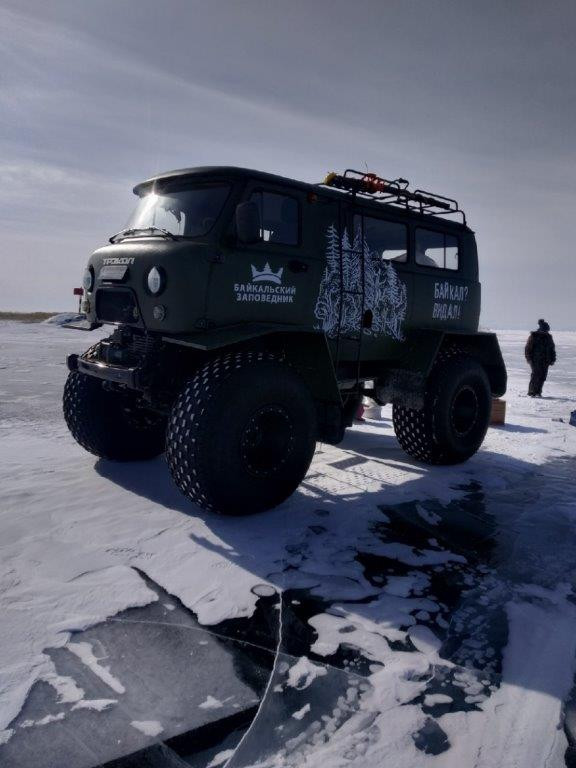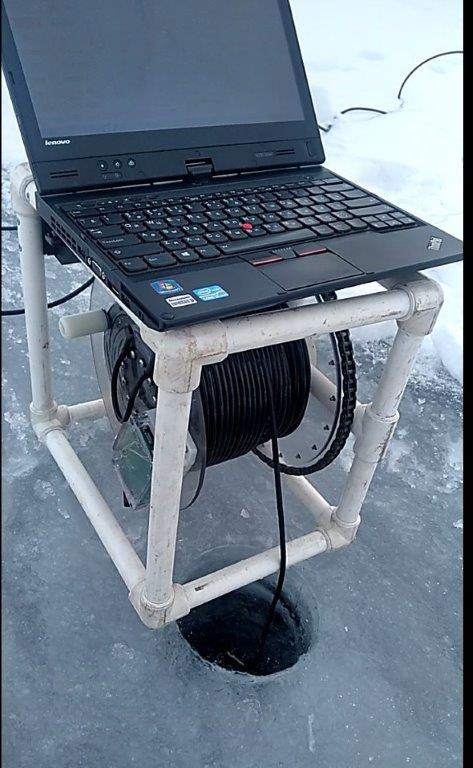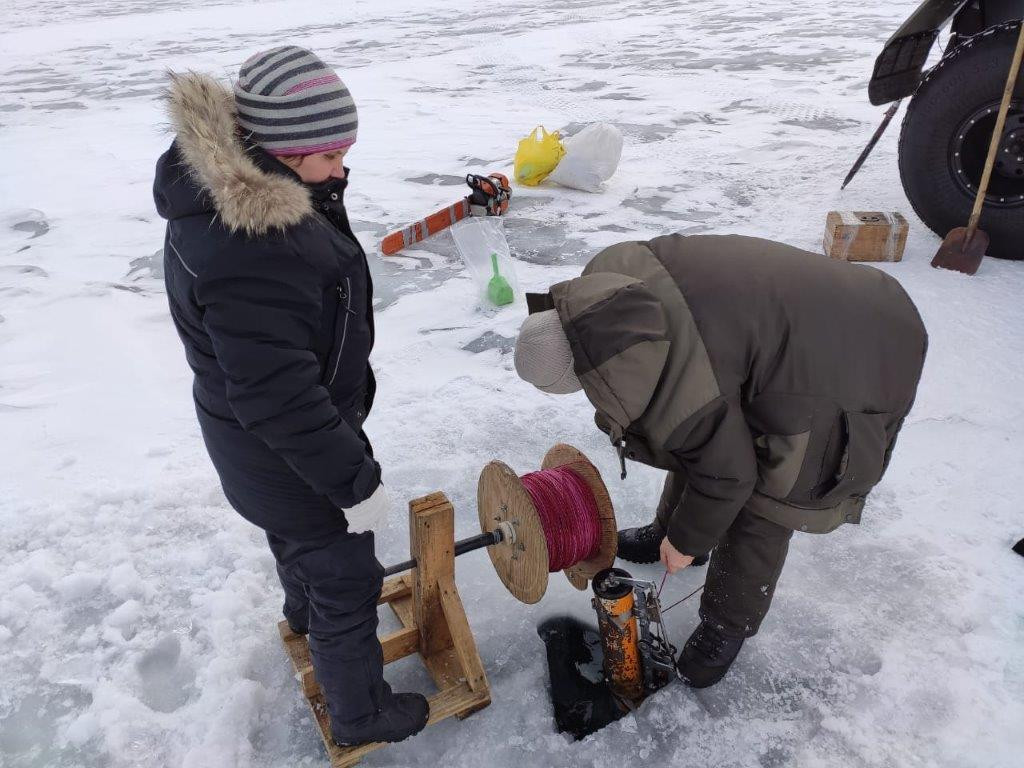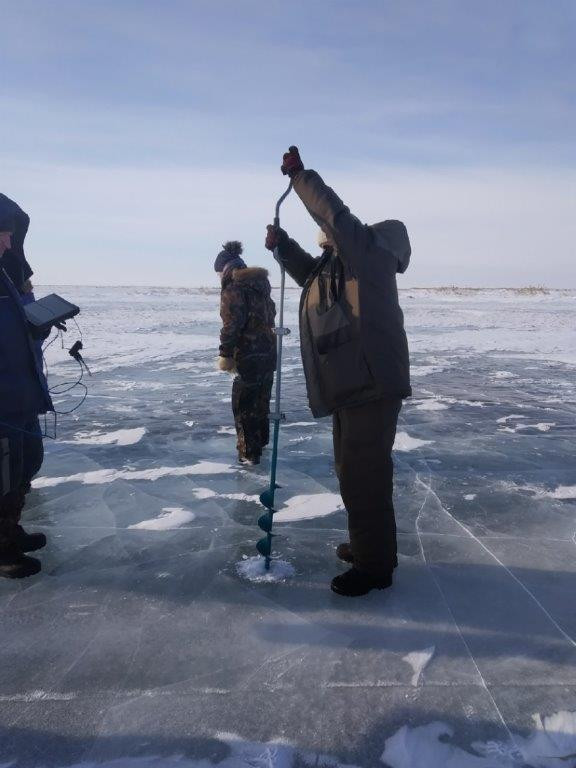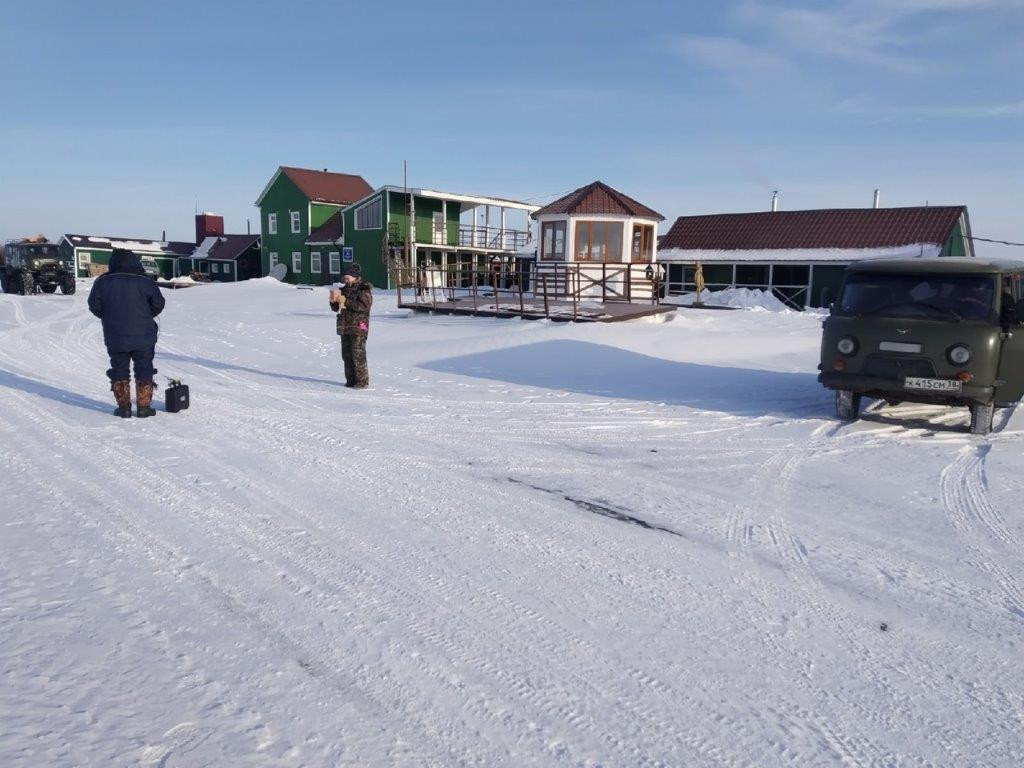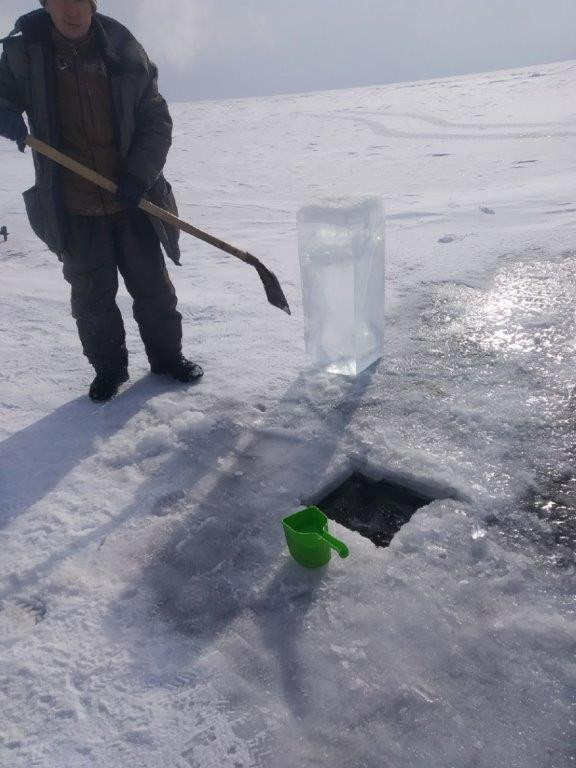Expedition on the ice to the Selenga River from 1 to 5 March 2021
Within the framework of the programme “Study of Transformations in the State of Water Bodies and Watercourses of East Siberia in Seasonal and Long-Term Aspects in Terms of Climate Changes, Geological Environment and Anthropogenic Pressure”, hydrophysical, hydrological, hydrochemical, and hydrobiological investigations were carried out from 1 to 5 March 2021 in the delta of the Selenga River and in the water area of the Selenga shallow water. The Baikalsky Nature Reserve provided technical support of the expedition that was based on the "Srednyaya channel" cordon in the delta of the Selenga River.
The aim of the expedition was to investigate hydrophysical and hydrological parameters in the mixing zone of riverine and lacustrine waters, study the chemical composition of water, abundance, biomass, species diversity of microorganisms and phytoplankton in waters of the Selenga River and the Baikal areas adjacent to the delta.
Comprehensive studies were carried out at 18 stations in the channels of the Selenga delta (estuarine areas) and the water area of the Selenga shallow water. At all stations, vertical measurements of electrical conductivity, temperature, illumination, and concentrations of dissolved oxygen and chlorophyll were carried out using a CTD-probe (JFE-Rinko). In the water area of the Selenga shallow water, directions and current velocity were measured in different layers (from the surface to 40 m). Water samples for chemical and hydrobiological analyses were collected both from the surface and from deep layers with a bathometer (28 samples in total). Microbiological investigations were carried out for the following parameters: the total number of microorganisms, total viable count, detection of organotrophic psychrotolerant and oligotrophic microorganisms, enterococci, spores of sulfite-reducing clostridia, total and thermotolerant coliforms. In the samples, it is planned to determine pH value, ion composition, the content of nutrients and organic matter, biomass and species diversity of phytoplankton.




